
Ghent is a city and a municipality in the Flemish Region of Belgium. It is the capital and largest city of the East Flanders province, and the third largest in the country, exceeded in size only by Brussels and Antwerp. It is a port and university city.
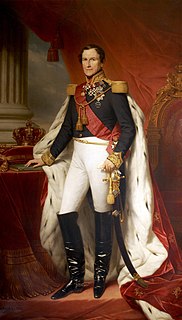
Leopold I was the first king of the Belgians, reigning from July 1831 until his death.

Leopold II was the second King of the Belgians from 1865 to 1909 and, through his own efforts, the owner and absolute ruler of the Congo Free State from 1885 to 1908.
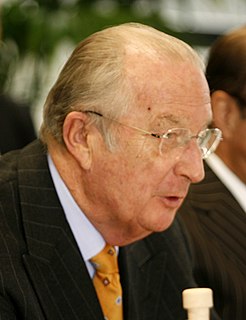
Albert II was King of the Belgians from 1993 to 2013.
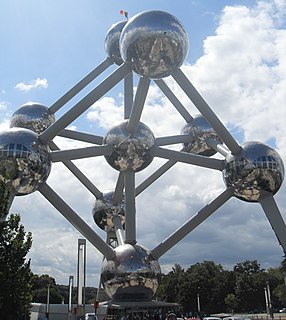
Laeken or Laken is a residential suburb in north-west Brussels in Belgium. It belongs to the municipality of the City of Brussels and is mostly identified by the Belgian postal code : 1020. Prior to 1921 it was a separate municipality.
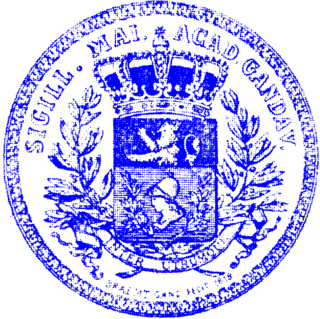
Ghent University is a public research university located in Ghent, Belgium. It was established in 1817 by King William I of the Netherlands. After the Belgian revolution of 1830, the newly formed Belgian state began to administer the university. In 1930, the university became the first Dutch-speaking university in Belgium, whereas French had previously been the standard academic language in what was Université de Gand. In 1991, it was granted major autonomy and changed its name accordingly from State University of Ghent to its current designation.

Princess Elisabeth, Duchess of Brabant is the heir apparent to the Belgian throne. The eldest child of King Philippe and Queen Mathilde, she acquired her position after her grandfather King Albert II abdicated in favour of her father on 21 July 2013.

The Wunaamin Miliwundi Ranges, formerly known as the King Leopold Ranges between 1879 and 2020, are a range of hills in the western Kimberley region of Western Australia.
Jules Ottenstadion was a multi-purpose stadium in Gentbrugge, Ghent, Belgium. It was used mostly for football matches and used to be the home ground of K.A.A. Gent. The stadium held 12,919 seats and was built in 1920. It was replaced as the club's home ground by the new Ghelamco Arena in 2013. At the end of the use of the stadium for the home matches of KAA Gent, it was simply called Ottenstadion by the people of Ghent. It was situated in the centre of a residential neighbourhood in the Bruiloftstraat in Gentbrugge.

The Ghelamco Arena is a multi-use stadium in Ghent, Belgium. It hosts the home matches of football club K.A.A. Gent and was officially opened on July 17, 2013, making it the first new-built Belgian football stadium since 1974.
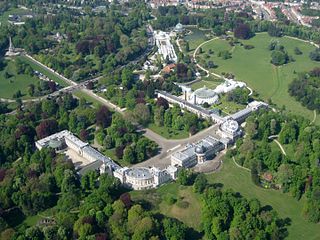
The Palace of Laeken is the official residence of the King of the Belgians and the royal family. It lies in the Brussels region, 5 km (3 mi) north of the city centre in the municipality of the City of Brussels. It sits in a large park called the Royal Domain of Laeken, which is off-limits to the public. It was originally named the Castle of Schonenberg and is often referred to as the Royal Palace.

The Crown Council of Belgium is composed of the King of the Belgians, the Ministers and the Ministers of State. The constitutional Monarch chairs the Crown Council, which has no legal competence but simply advises the crown when consulted on extraordinary matters.
Moscou is a densely populated neighbourhood of the Belgian city of Ghent, which owes its peculiar name to the presence of the Russian army in 1814-1815.

The Ghent tramway network is a network of tramways forming part of the public transport system in Ghent, a city in the Flemish Region of Belgium, with a total of three lines. Since 1991, the network has been operated by De Lijn, the public transport entity responsible for buses and trams in Flanders.
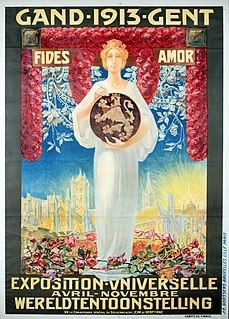
The Exposition universelle et internationale of 1913 was a World's Fair held in Ghent from 26 April to 3 November.

Belgiëlei is a broad avenue in the southeast of the Antwerp district in the city of Antwerp in Belgium.

Belvédère Castle is a Belgian royal residence in Laeken, Belgium, which currently houses Albert II of Belgium and his wife, Queen Paola of Belgium.

Shortly after protests seeking justice for George Floyd, an African-American who was killed during a police arrest, began in the United States, people in Belgium protested to show solidarity with Americans and to demonstrate against issues with police or racism. Vigils and protests of up to thousands of participants have taken part nationwide.
A bust of Leopold II of Belgium has been on display in the Zuidpark in Ghent for many years. As awareness of Leopold II's genocidal reign in Congo became widespread, public pressure grew to remove the statues of him in Belgium, and the bust was repeatedly defaced. On June 30, 2020, during the George Floyd protests in Belgium, part of the global George Floyd protests, it was removed from its location, to be stored in a warehouse. The date of its removal was also Congo's independence day.
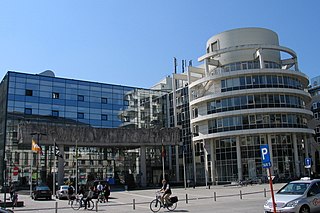
Woodrow Wilsonplein is a city square in the center of Ghent, Belgium. The square is colloquially called 't Zuid(English: The South), after its location just south of the historical city center and the former train station Ghent-South. It is named after Woodrow Wilson, the 28th president of the United States and first US president to pay an official state visit to Belgium.

















